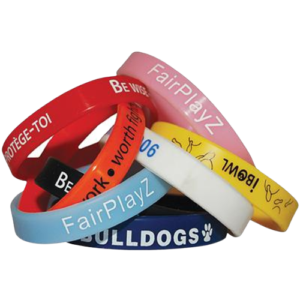
In the event of an emergency, wristbands have quickly gained popularity for use as a means of identification. You likely recognise the value of them, but what exactly is a wristband? Just what effect does it have? And how might it be used in place of conventional identification documents?
Although wristbands have been around since the 1980s, it is only recently that their technology has been developed enough to be used as an identity-management tool. While no one can predict the future precisely, current trends indicate that information will increasingly be transferred without the need for physical touch. To enter a building or pay for products and services in the same manner a credit card does today is one example.
A variety of colourful or patterned materials, including Fabric, Silicon, Vinyl, and Tyvek, are used to create wristbands. Adults and kids alike can sport one of these colourful wristbands. Some wristbands contain a small microchip that can be used to verify IDs and even provide location data to emergency services in the event that verification of identity is necessary. Radiofrequency identification (RFID) technology is now widely used by authorities for this purpose because of its increased accuracy and speedy reaction times.
A legitimate and safe manner for hotel visitors to identify their check-in are vital, especially when the function requires a wristband. The bracelet also enables simple access to a guest’s identify and personal information. In addition to serving as an ID upon check-out in the event of theft or loss, these wristbands are perfect for use as door security when a hotel receptionist welcomes guests into the facility. As an alternative to using a key card, visitors of a hotel can just use their RFID wristband to get entry to their room. Since this technology makes things easier for hotel guests, many establishments are using it.
Wristbands are especially useful at conferences since they can be used as a key to enter the venue or worn as a badge by those attending each event, eliminating the need for attendees to carry individual badges. Custom wristbands are also ideal for granting access or enhancing security in many various areas, such as accessible toilets, changing rooms, and even garages amongst a few other things. Wristbands can also be utilised for a wide number of functions in nightclubs and bars during nights out. One could use a wristband to get access to a venue or a restricted area within the venue, such as the VIP section or the backstage. Wristbands with school or event logos are worn frequently at water parks, concerts, and other events.
There is a lot riding on the shoulders of the host or event organiser. Each and every detail must be taken care of to guarantee a successful event, from planning the menu and arranging the venue to handling parking and selling tickets. You can see how it would be challenging to secure one last thing from your guests: A form of officially-recognized identity. Because of this, wristbands are rapidly replacing other methods of identification and helping to streamline event planning. Some providers specialise in express wristbands that may be made and delivered in 24-48 hours for last-minute requests against a tight deadline.
The appropriate personalised wristband is a wonderful identifying solution created by Wristbandseurope.com. They’re customizable with your own photographs, logos, or text and fashioned of sturdy, comfy fabrics. Even better, users can add QR codes or barcodes that can be scanned at the door to keep unwanted guests out. The wristbands can be purchased online at www.wristbandseurope.com, where a helpful sales staff is standing by to answer any questions you may have.
